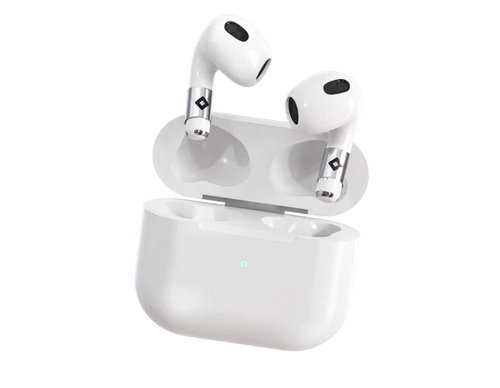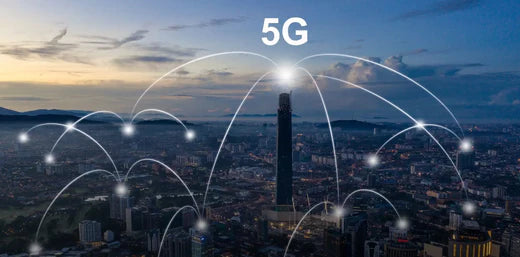With the rollout of 5G technology, questions about its safety have become increasingly prevalent. Concerns range from the potential health effects of 5G radiation to the environmental impact of 5G towers. This article aims to address these concerns by examining what 5G radiation is, its potential dangers, and whether 5G is harmful to humans and the environment.
What Is 5G?
In 2019, 5G networks were launched. The term "5G" means "fifth generation." It is the latest advancement in mobile networks, promising faster speeds, lower latency, and greater capacity than its predecessors. Unlike 4G, which predominantly uses frequencies below 6 GHz, 5G utilizes higher frequency bands known as millimeter waves (mm-Wave), ranging from 24 GHz to 100 GHz. These higher frequencies allow for faster data transmission and increased bandwidth, facilitating innovations like autonomous vehicles, smart cities, and the Internet of Things (IoT).
5G EMF Waves and Radiation
One of the core components of 5G technology is electromagnetic field (EMF) radiation. EMFs are a type of non-ionizing radiation, meaning they lack the energy to remove tightly bound electrons from atoms or molecules.
The higher frequency band used by 5G has raised concerns about potential health effects. Millimeter waves in 5G have shorter wavelengths and can be absorbed by the skin and superficial tissues. This absorption has led to worries about whether prolonged exposure to 5G radiation might lead to adverse health outcomes.
Is 5G Safer Than Wi-Fi?
When comparing 5G to Wi-Fi, it's important to note that Wi-Fi operates at much lower frequencies, typically between 2.4 GHz and 5 GHz. Although Wi-Fi radiation is a form of EMF, its lower frequencies mean it penetrates the body more deeply but with less energy than 5G's millimeter waves.
The debate over whether 5G is safer than Wi-Fi often centers around the intensity and duration of exposure. While both technologies emit non-ionizing radiation, the higher frequencies of 5G are largely absorbed by the outer layers of the skin, whereas Wi-Fi penetrates more deeply.
Does 5G Technology Have Any Effects on Health?
The question "Is 5G dangerous" is complex and multi-faceted. Research into the health effects of 5G radiation is still in its early stages, and findings are mixed. According to the World Health Organization (WHO), there is little research on the frequencies utilized in 5G.
A 2021 study discovered that people suffer increased EMF-related tissue warmth as they age. Furthermore, the higher the EMF, the more they absorb. This is because older people tend to have thinner skin and less blood flow.
In 2017 doctors and scientists started a petition to halt the EU's 5G rollout, citing cancer concerns. One concern is that because 5G is so new, there has not been enough time to thoroughly verify its safety. There is also a lack of scientific research on the possible effects of highly concentrated 5G zones in crowded cities, as well as chronic 5G exposure, according to some experts.
The potential impact of 5G on more people means more variation and particular genes influence radiation sensitivity, according to researchers. According to a 2021 study, the genetic effects of EMF vary on aspects such as frequency, intensity, cell type, and exposure time, and the types of gene expression affected "are consistent with findings that EMF causes genetic damages."
Furthermore, many of the government-approved RF regulations were enacted in the late 1990s and were based on inadequate research. Scientists no longer believe the problem is clear, and some are speaking out. More than 3,500 physicians from preventive and environmental medicine, toxicology, and other specialties have come together to oppose 5G, citing the main associated risks of nonionizing radiation, such as cancer, cellular stress, genetic damage, reproductive changes and deficits, and neurological disorders, as documented in peer-reviewed scientific literature.
The National Institute of Environmental Health Sciences (NIEHS) also states that in the 1990s, some studies discovered a possible link between EMF field strength and an elevated risk of childhood leukemia, however, the correlation was weak. However, the group states that "in the age of cellular telephones, wireless routers, and the Internet of things, all of which use EMF, concerns persist about possible links between EMF and adverse health effects." The NIEHS acknowledges that further study is needed and urges continuing education on practical strategies to reduce EMF exposures.
To mitigate potential risks associated with 5G radiation, many are turning to Bodywell® EMF protection products. These devices harmonize electromagnetic frequencies, reducing the amount of harmful EMF radiation that your body absorbs by up to 80%, thereby offering a layer of protection in the age of 5G.





















Leave a comment
This site is protected by hCaptcha and the hCaptcha Privacy Policy and Terms of Service apply.